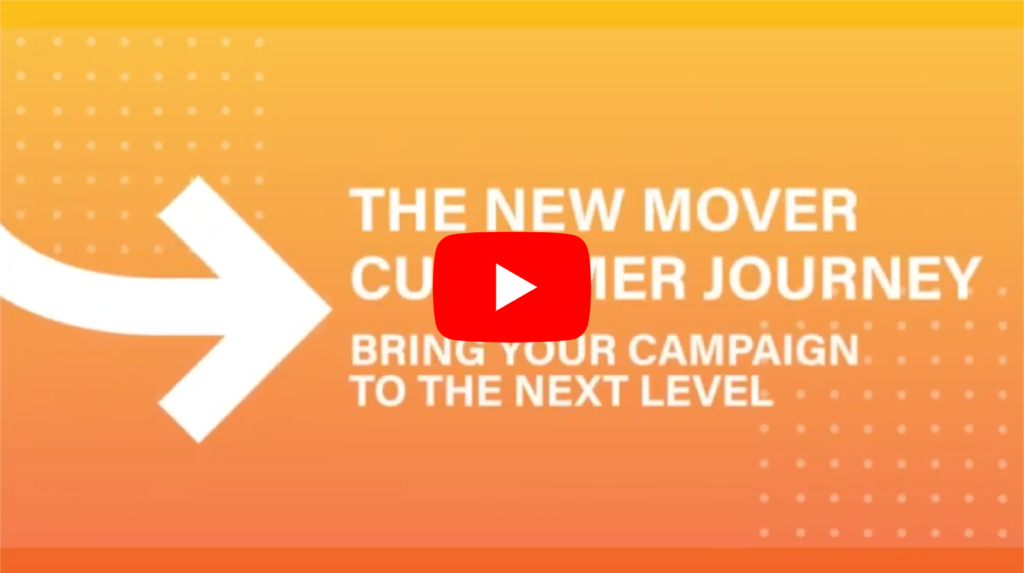A Look at Some of Our Favorite Customer-Focused Campaigns
Although we could write several blogs about all the great marketing campaigns that inspire and motivate us to be the best marketers possible and make the most effective material – in this blog, we’re looking at a few that we really admire because of how relatable and real they are. We’ll be breaking them down, thinking through what made them so successful, and in turn – helping you brainstorm your next campaign. Follow along as we dive into these customer-centric campaign leaders.
Apple’s #ShotoniPhone Campaign

No matter where you’re located – you’ve likely seen this one around town. On billboards, buses, signs, or online. iPhone and Apple’s popularity is pretty known, but what we didn’t know when the iPhone first became popular was that it would eventually completely replace the digital camera. And that’s what this campaign shows; that you can take photos with your iPhone that are as beautiful as a camera that would cost you thousands. That’s great and all, but that alone would not convince people of today. So, why’s this campaign so successful? It gets real people involved. It’s relatable. The photos are not only from real Apple customers – but include their names. If someone wanted to, they could look up the name of the person in the bottom corner associated with taking the photo and learn more about who that person is. The best part? Not all of these people are photographers, showing that anyone could use the iPhone to take great photos. This tactic is pretty genius and builds trust – as no one would really care if it was simply a generic photo that easily could have been taken on a Canon. “According to various studies, over half (51%) of Americans trust user-generated content more than other information on a company website and claim that it influences what they buy and where they buy it from.”
Coors Light’s #CouldUseABeer Campaign
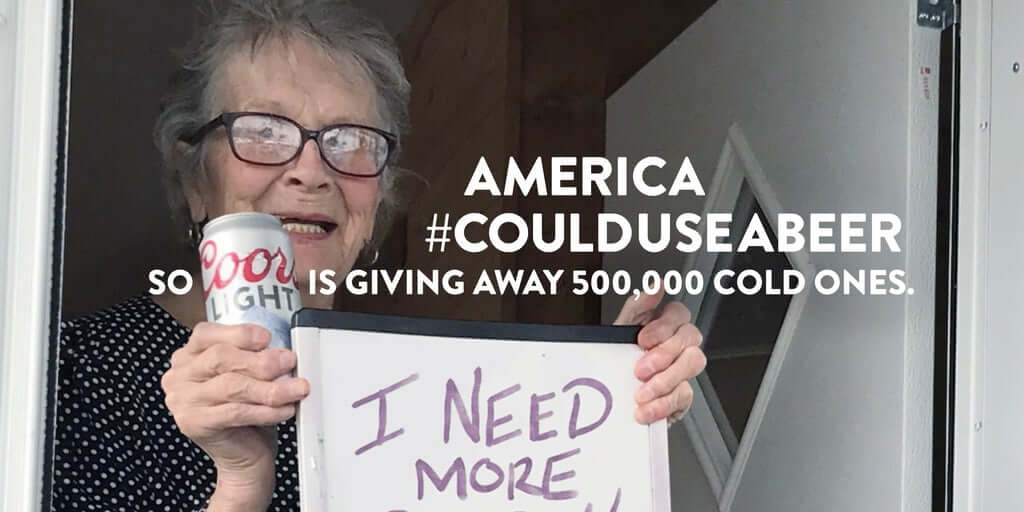
Another campaign that spoke to the general public and got them involved during a difficult time? Coors Light’s #CouldUseABeer. After a photo of a quarantined, 93-year-old woman asking for a beer went viral, Coors Light engaged with its audience by offering free six packs to anyone who was tweeted about (who – you guessed it, could use a beer). This tactic of giving away free items may seem pretty crazy, but it can go a long way. Although Coors Light gave away over 500,000 beers, their name was tweeted about again and again, which led them to trend, and boosted their reputation in a time of need.
American Apparel’s Direct Email Marketing
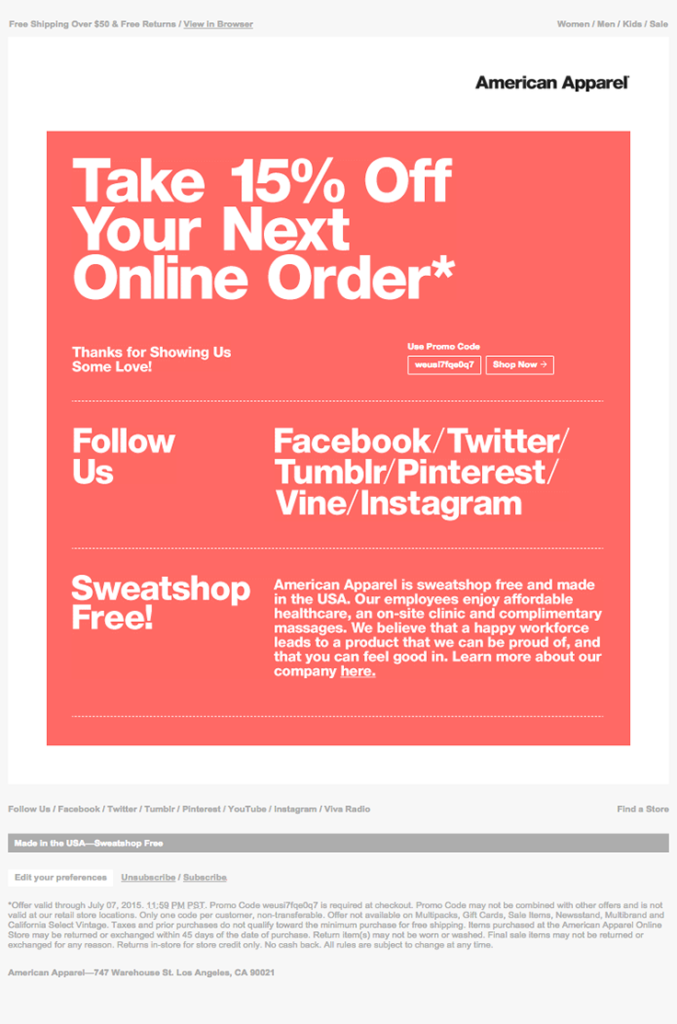
Known for being trendy and modern, American Apparel is no stranger to effective, up-to-date, customer-centric marketing. We’re specifically impressed with their to-the-point email marketing. No frills, no fluff – just what the customer wants (sales, discounts, and freebies). American Apparel always ensures that there’s no guesswork for their customers. Simple and sleek, their emails are call-to-action forward without being in-your-face.
Mercedes’ “Like You” Campaign

How do you relate a high-end brand to a broader audience of customers? Relate it to them, literally. Mercedes’ “Like You” campaign did just that. Called to several different types of audiences with phrases like, “Detail-obsessed, like you”, “Groundbreaking, like you”, “Original, like you” and “Curious, like you”. And not only was this phrasing compelling, but consistent. For the span of the campaign, potential customers could find the phrasing on billboards, signs, online ads, and on tv. The consistency was key, in that potential customers began to associate themselves with the brand and possibly even buy a Mercedes.
Airbnb’s Use of User Generated Content

Similar to Apple’s tactic, Airbnb uses the photos, videos, and feedback of its customers in its campaigns to promote beautifully classic or uniquely interesting places to stay. “Millennials spend 30% of their media time (5 hours/day) engaged with user-generated content (UGC). Coincidently, this is the same generation that drives Airbnb’s success in the sharing economy.” Airbnb keeps things personal and personalized by including its audience, which facilitates a happy and loyal community of customers.
Coca Cola’s Share a Coke Multichannel Campaign
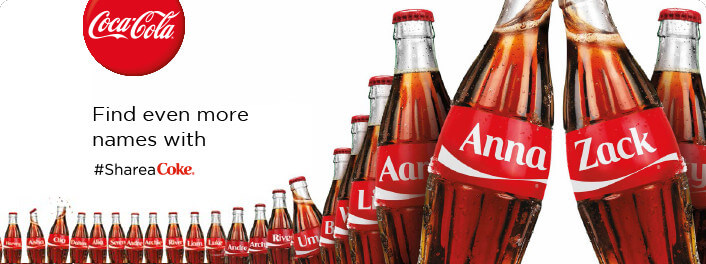
We all know this one. There’s nothing more personal than having your own name on a Coke bottle – which is exactly what Coca Cola did for its ongoing “Share a Coke” campaign. Whether you customize your bottle or simply find your name in store, you’re likely to share it with the world through text, email, on social, you name it (no pun intended)! And its rollout in 2011 sure worked in building brand awareness, boosting sales, and creating positive brand recognition, as “Young adult consumption increased significantly during the campaign, up by 7%, making 2011 the most successful summer ever. The campaign earned a total of 18,300,000-plus media impressions.”
Spotify’s #2020Wrapped Campaign
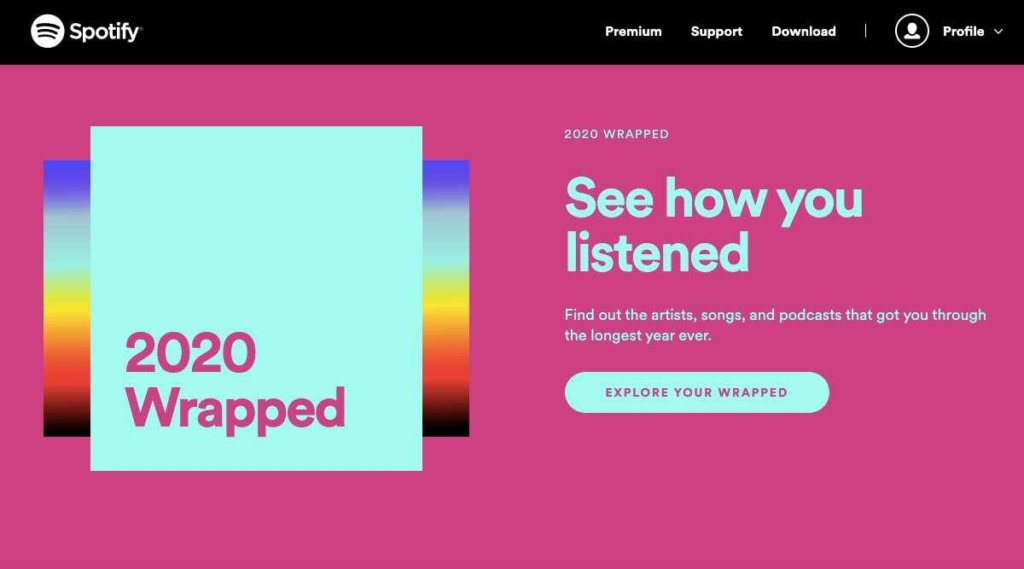
If you have any form of social media, you’ll likely remember this campaign flooding your feed, and maybe you even took part in it. At the end of 2020, Spotify allowed its customers to see their year of music with “2020 Wrapped”, which compiled their listening into a lovely array of photos and stats. Viewers loved seeing their personal data compiled into a nicely packaged marketing piece – and loved sharing their interests with others. Smart on Spotify’s end, because it not only gave them free marketing, but boosted their recognition.
So, What Have We Learned?
If you haven’t noticed, most of these campaigns share one key factor; relatability. How can you use relatability to create effective campaigns, too? Know your audience. Before even starting to brainstorm a campaign, make sure you’re fully aware of who, where, and when you’re targeting. And when you do start your campaign based off your findings, use that data and understanding to carefully craft consistent messaging that includes clear call-to-actions and personalized, catered content. Use hashtags, giveaways, QR codes, PURLs, BRCs, and more to engage with your audience and include them in your campaign. And, when and if appropriate, sprinkle in some humor.
Interested in making an impactful, relatable campaign that can help boost your company’s marketing efforts? Not sure exactly where to start? Look no further. Strata’s here to help. Contact us today to get the brainstorming started.
Let’s Get Ethical
Marketing ethics has always been a never-ending conversation, especially considering the ongoing changes in our technology and the way we market. Today, we’re talking about ways your business can promote ethical marketing, and how to apply these practices in your next campaign while navigating through the Information age.
Advancements in Ethical Marketing
At first glance, marketing ethics can come off as simple – often viewed as just being honest with your advertisements and not promoting scams. But with the integration of digital marketing, there are much more complex, ethically charged dilemmas at hand that marketers come across on a day-to-day basis. If handled incorrectly, these dilemmas can hurt your brand’s reputation and cost you customers. Recent surveys show that 35% of consumers have stopped buying from brands they perceive as unethical, even if there’s no substitute available. That said, there are many approaches your company can take to tackle these ethical dilemmas and promote brand integrity.
Here are some common ethical dilemmas of the information age:
Data Ethics
How you obtain and use your data is everything when it comes to marketing tactics and campaigns. Surveys show that around 1 in 4 employees are uncomfortable with not only how their companies buy their data, but how they use it. This leads to the conversation of data ethics and establishing goals within your company to promote ethical data use. Data goals look different for every company in terms of tracking, reporting, and level of controls. This requires internal transparency and accountability, as there aren’t clear universal rules. A good start is to design your programs from the start to be transparent, for everyone in the company, and for consumers. There should also be equal expectations for data usage with your partners, suppliers, and publishers.
Privacy & Transparency
Privacy is another concern that’s always on consumers’ minds, and we can’t talk about its standards and rules without mentioning the General Data Protection Regulation (GDPR). The GDPR is by far the most comprehensive set of data protection regulations in the entire world, and provides clear digital marketing guidelines on consent, data transfers, breach reporting requirements, and limits on automated data processing. While 47% of people say they have greater trust in companies because of GDPR improvements, providing security to ensure your consumers’ data is not at risk should always be a priority. Since 84% of customers say they’re more loyal to companies with strong security controls – it’s safe to say (no pun intended) that an extra security spend is worth the cost. Ultimately, privacy boils down to being transparent with your consumers while keeping their data and information confidential.
Ethical Targeting
Advancements in digital marketing have enabled marketers to target their advertising campaigns around specific user data and demographics, which can lead to several different ethical dilemmas. The American Marketing Association spoke about these targeting issues best, by saying, “While there are some good ways to target by group, targeting or excluding by race, sex, sexual orientation or other immutable traits is largely ineffective and, at worst, unethical.” This leads to the concept of ethical target marketing, where companies will research consumers to see what ways an individual might purchase a product without taking advantage of their information. While companies can advertise to certain groups, there needs to be an emphasis on making sure the message isn’t offensive or discriminatory.
Honoring & Upholding Commitments
This may come off as obvious, but it’s important to place integrity on your company’s end when marketing a product or service. Make sure your commitments within marketing statements are both upheld and correct, and that you’re actively deleting loopholes within your advertisements and contracts. Then, ensure that all content presented is not misleading and easy to follow. Provide complete information on product features or service specifications.
We know there are a ton of moving parts when it comes to marketing ethics – and it can be overwhelming. That’s okay. At the end of the day, what’s most important is putting your consumer’s needs, privacy, and safety first – and letting everything else fall into place.
Feeling informed and motived? Contact us today to learn more about how we can take your next (ethical) marketing campaign to a whole new level.
San Antonio, Here We Come!
At Strata, one of our favorite things to do is talk marketing. We’re problem solvers, and we pride ourselves on helping industries overcome their marketing challenges. With healthcare marketing being one of our many specialties, we’re excited to announce that the Strata team is heading back to the annual SHSMD Connections Conference in San Antonio, Texas from September 19th-21st, and we couldn’t be more excited!
SHSMD? What’s That?
For those who’ve never heard of SHSMD (aka the Society for Health Care Strategy & Marketing Development), it’s an AHA professional membership group that focuses on how the industry can evolve and change with new strategies, marketing, and technology, serving more than 4,000 members.
This year, SHSMD is celebrating the 25th anniversary of their annual “Connections” conference, and we can’t wait to connect with some of the industry’s best marketing and communications strategists. It’s been two years since we’ve been able to interact with these professionals in person, and we’re excited to be able to once again inform, challenge and validate their thinking, while also learning from the conference’s guest speakers from all over the country.
What We’re Looking Forward to & What We’re Bringing
This isn’t our first rodeo (even though it’s our first time going to Texas), as we’ve attended this conference for 20+ years. However, this will be our first time back with a refreshed look, thanks to our 2020 brand refresh. As marketing experts with almost 30 years of experience, we’re excited to bring our expertise to the show, and create some new, long-lasting relationships.
It’s clear that the healthcare landscape is evolving faster than ever, and to stay competitive, hospital systems need to start looking at marketing as a strategy rather than an afterthought. We plan to go into the show with an open mindset and to educate healthcare industries on the importance of New Mover Marketing and how SmartMove can help them achieve their patient acquisition goals.
If you don’t know who (or what) we do, Strata offers a wide range of client-driven solutions to help companies solve complex marketing and communications challenges. We’re a lot of things (innovators, go-getters, marketing experts), but we’re people first—and we know you are, too. That’s why we believe the best way to help a business achieve its marketing goals is by focusing on the people who work there.
Learn More
If you’re attending this year, stop by booth 216 to learn more about how Strata can help you with your marketing efforts. We can’t wait to meet you!
If you’re not attending the upcoming conference- no worries. Contact us today to discuss your own personal marketing plan from the comfort of your own home.
All Your Questions Answered
There’s a lot of buzz around new mover marketing and the best ways to target potential new customers. And with all the attention and noise around it, the topic can get confusing and leave a lot of essential questions unanswered. Today, we’re going to answer all your questions about new mover marketing – and give you some insight into how to start a successful and smart new mover campaign.
Why should I target new movers in the first place?
Easy answer. With over 13% of Americans moving ever year, a ton of new movers are not only new to your area, but are looking for your business. They’re in a stage where they’re starting to develop what will become habitual shopping/buying habits and not looking for a reason to spend, but where to spend. Recent surveys show that 80% of new movers are willing to try new products since they’re in a new market and searching for new businesses and services. Also, how else are you going to replace those long-term, current clients that are moving out of your market area?
In what industries is new mover marketing effective?
Movers moving into a new house spend on average, $9,400 post-move, and that’s split into several different industries depending on the individual. When people move to new areas, they have several new (and already existing) needs that can only be met by several different industries. This means a new grocer, new healthcare provider, new dentist, new restaurants, a new gym… list goes on and on (and on).
Is it possible to segment who I target?
Yes, you can segment who you’re targeting based off age, demographic, and even by household income, to identify your ideal customer profile. The level of available segmentation depends on your new mover marketing partner and the technology that’s provided, but it can (and has been) done.
Can I have more than one touch point across several channels?
Absolutely! We recommend implementing multiple touch points that come from different angles. This means reaching your customers through several different channels, such as digital, direct mail, and email. All of these channels of communication, used together and correctly, are proven to show effective ROI.
How can I grow my new mover market through direct mail?
With around 61% of customers finding direct mail influential in making purchasing decisions, it’s important to make it one of the cornerstones of your new mover marketing campaigns. Direct mail can be personalized for the consumer, be authentic to your brand, and provides opportunity to be creative with how you market products and services to your consumers. Mailers that typically work best for new movers are dimensional mail, postcards, and bi-folds with incentive items.
How can I grow my new mover customer base with digital ads?
Hand in hand with direct mail, digital ads are excellent in getting your company’s name across your potential customer’s device. Creating display and banner advertisements is an effective way to send customers to your website or to a specific landing page. The power of digital marketing often speaks for itself, so it’s important to have elements of it involved in your new mover marketing campaign to reach all potential customers – not just some.
What kinds of responses should I expect throughout my campaign?
This all depends on the structure of your campaign and what kind of responses you’re aiming for. For instance, if you include a business reply card (BRC) within your direct mailer, your response rate will be based off how many potential customers fill them out and return them. Furthermore, the more aggressive your offer is for a direct response, the greater the response will be. Responses typically vary between industry and how many different touch points are built into your campaign. Response rates can also be determined by digital ads based off the number of consumers that interact with your landing page by clicks or submitted forms.
What’s the best way to track responses from my campaign?
When executing a new mover marketing campaign, make sure the program you’re using can easily track all progress, responses, and data that comes with the campaign. Find a partner with access to technology that allows you to see real time responses for your campaign and gain intelligence from those responses to make adjustments as it’s executed.
How do I effectively set up a new mover marketing campaign?
Picking the right partner is everything when it comes to successfully setting up a new mover marketing campaign. The right partner will provide the right data, the right technology, and a partnership with strong content creators who will represent your brand correctly. Work with a company that understands your markets and has several years of experience.
Looking for ways to incorporate a new mover marketing strategy into your next campaign? Here at Strata, we have years and years (and years) of experience under our belts. We’re here to assist you with all your new mover marketing questions and needs. Contact us today.
Bring Your Campaign to the Next Level
With over 40 million people moving every year, there’s a huge market for new customers moving into your target area. That said, many businesses have no idea where to start when it comes to targeting and reaching these new movers. Today, we’ll give you an overview of what new mover marketing is, the customer journey that a new mover takes, and the best channels and campaigns to reach them. Let’s dive in!
From Movers to Buyers
One of the most important things to realize about new movers is that they’re currently nobody’s loyal customer (yet). They’re a key group to target because they’re open to new businesses and products, and on average, develop 72 or more new business relationships within one year of moving. They’re also 5 times more loyal than your regular customer due to being new to the area. Once they find something they like, they’re willing to frequently buy it with ease. Making up 17% of the U.S. population, you can’t afford to miss these walking (and unpacking) opportunities. So, how are their (frequently loyal) buying habits formed? New movers are heavily influenced by timing. Whether you contact them before or after their move decides how they feel about your communication, and what they’ll do about it…
Pre-Move Buying Habits
Data shows that movers begin to stock up on home items right before they move. Products such as kitchen utensils, light fixtures, and everyday household tools are high on their list during this pre-move time.
Post-Move Buying Habits
After their move, new home buyers are likely to spend an average of $9,400, while renters spend around $4,700. Still, this number varies with age, area and demographic. Most of these buying decisions are made within the first few months of moving, which makes it the best time for your company to make contact, introduce yourself, and showcase your product.
A new mover’s first purchases will depend on their personal needs and priorities. For instance, a mover with medical needs may find a doctor immediately, while a mover with a large family may first find a new grocery store. Either way, they’ll have to find both eventually – and it’s likely they will within the first few months. Thankfully, new movers don’t need to be convinced to buy (they’re already more than ready), you’ll just need to convince them to make the right buy (from your company).
Staying in Touch
It’s not only important to get in touch with these potential loyal customers, but to stay in touch. After making a strong first impression, you’ll want to make more points of contact to ensure your company stays top of mind. It’s essential you have a good combination of marketing across several channels that are strategically picked and placed.
New Mover Marketing Tactics
There are several ways to reach these new movers, first, but since we’re experts – we’ll tell you the best ones. First is direct mail. Direct mail ideally arrives at the same time or a few days after new movers enter your neighborhood. Delivering direct mail that welcomes and attracts the new mover while introducing your business is a great way to begin an ongoing relationship. And the stats back this up – as 40% of consumers try new businesses after receiving direct mail. Direct mail is perfect as a first touch to new movers, as it’s personalized, meets them in their new home, and catches them at the right time.
A great way to ensure this direct mail delivers ROI is through BRCs (business reply cards) or eBRCs with incentives. A BRC is a vehicle that allows a prospective customer to provide information to send back to your business, and if incentivized, can return high response rates and bring you valuable customer data.
What’s the next best channel for reaching new movers? Digital advertising. Hand in hand with direct mail, digital ads can create brand awareness, link to your chosen landing page, and target specific online audiences. Digital advertisement placement and audience targeting are the top optimization tactics used by advertisers today.
Email is next – and combined with both direct mail and digital ads, email can be that final touch that brings your company new customers. Using either the BRC information or engagement with digital ads, emails are easy to obtain, making it almost effortless to add new customers to your automated or personalized promotional email campaigns.
The Visible Influence
New mover marketing allows marketers to influence movers’ buying decisions from the beginning of their move all the way until they walk into your doors. It’s about building immediate and vital relationships – because once a new mover buys from you and your shop, they’re 90% more likely to become a repeat customer.
If you want to dig even deeper, it’s smart to use a program that gives your business insight into your customers – such as live statistics and touchpoint behaviors. These meaningful insights will allow your shop to make enhancements on the fly and improve your campaigns, ultimately increasing ROI.
If you successfully target new movers, create convenient touchpoints that meet their needs, and maintain conversation as they have questions and reach out, the new mover will not only finish their journey as a customer, but as a loyal, repeat one. Looking for ways to incorporate a new mover marketing strategy into your next campaign? With years and years (and years) of experience under our belts, we’re new mover marketing experts. Contact us today.
How to Attract Your Audience
Video ads aren’t anything new, but keeping up with the rise of their increasing online presence is. Most of us don’t even realize how often we come across video ads. With so many different apps and sites, it’s important to get your company’s video ads out there, in the right places, and noticed. The key is to look beyond traditional practices and dig deeper into the variety of different ways and places you can utilize them. Follow along as we take you through best practices for video ads.
Rise of Video
With the rise of social media and its many marketing uses; video advertisements have been more popular than ever before. So popular that, in the past 30 days, more video content has been uploaded than video created by major U.S. television networks in the past 30 years. Moreover, it’s estimated that the average person currently spends 100 minutes every day watching online videos. This is a 19% increase compared to daily viewing minutes in 2019, which stood at 84. What all of this means is that it’s not just that people are watching more video than ever before, but that competition for this space is on the rise. Stay on top of new trends and ways to engage your audience over your competitors with our five tips and tricks, below.
1. Choose the Right Video & Placement
The right video placement can be the determining factor for your video advertising success. Before anything else, make sure your company has a clear idea of where you want these ads to be – and where they’ll best meet your potential customers. Here are four highly successful video ad placements to keep in mind as you’re getting started.
Skippable in-Stream Ads: Skippable, in-stream ads play before, during, or after other videos. After five seconds, the viewer has the option to skip the ad.
Non-Skippable in-Stream Ads: Non-skippable in-stream ads are 15 seconds (or shorter) and play before, during, or after other videos. Viewers don’t have the option to skip the ad.
Native Video Ads: This video ad format blends in with the website’s layout for a seamless interaction.
In-Banner Video Ads: In-banner video ads are videos built inside a banner ads.
Knowing these four placements can allow for your brand and message to be properly delivered the way you’d like it to be within your diverse video ads.
2. Captivate
When we say captivate, we mean make a good first impression. It’s best to keep your videos around 15-60 seconds, because most of your audience may drop off if your ad drags on too long. The message may begin to get drawn out and blurry, causing the viewer to forget it. Short and sweet is the rule of thumb, and grabbing their attention in those first 3-5 seconds is key. You really don’t have much time before the viewer may click “skip ad” or exit out completely. Keep users engaged by using upbeat music, compelling questions, humor and more, based on your brand voice. Once you have your general ad idea ready, figure out the best place to position the ad. 79% of the people say a video ad has convinced them to buy a product or software – so make sure its length and creative makes it memorable. Not sure where to start? Take a look at one of our personal video ads below for inspiration.
3. Personalize
Online video ads tend to differ heavily from traditional television ads. This is primarily due to the personalization of online ads. Using personalization tactics can give you an impactful advantage over your competitors, so take advantage of this and research and study your customer demographics to better understand their behavior and buying patterns to properly place your ads in the right places. For example, if one of your demographic audiences viewed your services and clicked through the contact us page, but didn’t submit any information, you can infer that they got the chance and had the time to go through your website (showing some interest) and look over your services, but weren’t ready to take any next steps. In this case, a video ad with personalization could be used to help them progress, reading something like, “Learn more and get in contact with xyz to see how x company can help you with…” This way, you’re serving as an outlet and solution to their unanswered questions, and gently pushing them make that next step, instead of placing an ad for them to see that doesn’t apply to their current situation. The same goes for the placement of the video ad. If you find that the majority of your audience is viewing your content on Facebook or Instagram, place an ad within these platforms. Similarly, if you’re communicating a lot through email with potential customers, place a video ad in an email. An initial email with a video ad can receive an increased click-through rate of 96%. And, using the word “video” in your email’s subject line can increase open rates by 19%, click through rates by 65%, and cut the number of unsubscribes by 26%.
4. Make it Relevant
Make sure your ads are relevant. Don’t just interrupt your viewer in the middle of their browsing or shopping – add value to their day. Make them do a double take when scrolling to keep your company top of mind for your high performing audiences. The best way to do this is by empathizing with their needs and pain points, especially right off the bat (like we said, in that first 3-5 second). It’s helpful to create different or slightly different versions of the same video ad to ensure they fit seamlessly into whatever page they are placed on.
5. Represent Your Brand
Be sure, possibly above anything else, that each video is a good representation of your brand. Add a logo into the corner of the ad, or place it strategically within the video on certain frames. 3X more people are engaged with an ad when a brand name and message is presented in the first 10 seconds. Also be sure to include a clear & concise call to action (CTA), and use ad copy space to provide additional information about your product or service that didn’t make it into the video. You can even try adding a short teaser phrase or question to the video that compels people to view longer or check out your website, blog, landing page, or other platforms.
Reach Your Target Audience
Lastly, partner with advertising creatives to get your video ads done efficiently and in a timely manner. Having captivating, personalized, relevant information that’s positioned correctly will ultimately put your company in the best position possible to reach your target audience. If you’re looking to learn more about video ads, feel free to contact our skilled creative marketing team, here.
7 Ideas for Your Digital Strategy
So far in the Power of Digital series, we’ve highlighted digital’s general power and presence in today’s world, and shared key tips and tricks to plan, execute, and get the most out of your digital marketing campaigns. This week, we’re shifting gears a bit to take you through 7 unique and effective ways you can use digital in your next marketing campaign.
1. Content Marketing
Content is key and king, and that will most likely never change. Especially on digital platforms, content can make or break your marketing campaign. Almost every channel can benefit from content marketing, but those that benefit most are websites, blogs, e-books, white papers and one pagers, infographics, online brochures, social media, and digital advertising. You can expect about 67% more leads every month if your brand has a blog (compared to those who don’t). Digital content marketing can help you get noticed, help customers find you, and build brand reputation – and high-quality content can make you a subject matter expert, thought leader, and front-runner in the industry. A good online presence created through valuable content can earn your audience’s trust and influence prospects to take action, especially if that content includes an effective call to action.
2. Social Media Marketing
As widely used digital marketing channels, social media platforms such as Facebook, Instagram, Twitter, and LinkedIn, can help you expand your digital audience and reach (and connect with) people in several areas of the internet. Social media is an excellent, easy, and often free way to promote your business through visual and valuable content that can be uploaded in seconds – whenever and from wherever. Like we said, social media is a great place to reach, interact with, and communicate with customers. It’s a place where customers know they can reach you quickly, get instant gratification, and grow to feel more personally connected to your company. Platforms like Facebook and Instagram are useful for sharing announcements, blogs, landing pages, and more, and all of this content can also be shared, liked, and commented on by your customers and interested prospects. In fact, 53.6% of the world’s population uses social media, so take advantage of the crowd.
3. Video Content & Advertising
If you’re not already taking advantage of advertising with online videos, the time to start is now. According to Optinmonster, video marketers get 66% more qualified leads per year. Video is an effective, memorable, and authentic way to share company messages. It can be inspirational, entertaining, thought provoking, surprising, educational – you name it. It’s a great way to tell a product story, make announcements, or show the faces behind a company. Just make sure when you’re making video content that you know your intentions. What do you want to tell your audience? What do you want to show them? How do you want them to feel? And maybe most importantly, what do you want them to do? The best channels to post your video content are YouTube, Facebook, Instagram, and Linkedin – but video content can be posted pretty much anywhere, and can be broken up and used on several different platforms to target audiences in different stages of the buyer’s journey and acquire varied results.
4. Audio Content
As consumers are settling into their new routines of life at home, consumption habits are dramatically shifting across digital mediums. Podcasts are all the rage these days, and for good reason. Businesses, influencers, and thought leaders have started to realize that no matter what someone’s schedule, while they may not have time to watch, they’ll often have time to listen. Whether it’s on the traditional radio or via a podcast, audio has become an extremely relevant medium to offer on-demand listening for your busy audiences. Even better…audio marketing can often be easier and cheaper to produce and distribute highly tailored content than other forms of marketing.
5. PPC Advertising & SEM
PPC (Pay Per Click), advertising and SEM (Search Engine Marketing) efforts can draw a ton of traffic to your website. PPC focuses on driving search traffic with direct commercial intent. Pay-per-click ads through the Search Network help ensure you’re fully visible and front and center on an SERP when users submit queries that are relevant to your brand offerings. This digital marketing tactic varies in its cost, because the advertiser pays the publisher depending on how often their ad is clicked. Yet, the more you pay, the more possible prospects you’re likely to get. This type of advertising’s a great way to show off your brand to individuals who are actively looking for products and solutions that your brand has to offer. 65% of B2B companies have acquired customers through LinkedIn ads alone, just one of many places these advertising opportunities exist.
6. Digital Display Advertising
This subset of SEM efforts is also a great way to reach new customers using text, images, banners, rich media, interactive imagery, and video. Digital display advertising presents you with the opportunity to showcase your brand in a wide variety of ad formats. Display advertising is an excellent way to build brand awareness and get clicks, conversions, and sales from users who have an interest in your business and have found your display ads to be relevant to the solution or product they’re searching for. Digital display ad messaging can be easily customized based on your customer’s interests and shopping behaviors, but before getting into display advertising, make sure you choose an expert to work with to get the most out of your efforts and obtain higher ROI.
7. SEO
Lastly, SEO is a good digital focus for your company to have if you’re looking to increase organic search rankings for your website. The higher your pages rank on Google’s SERP, the better chance you have of growing your business and brand awareness. Having a high ranking also builds consumer trust and company credibility, and betters user experience, making it more likely for customers to become repeat buyers. The mediums that most profit from SEO auditing include websites, blogs, and infographics, but almost every channel can benefit from improved SEO.
Ready to enhance your next digital campaign? Contact us. We’ll help you brainstorm and execute, and make sure you get the most ROI for your digital marketing efforts.
5 Tips & Tricks to Enhance Your Digital Campaigns
Last week, in our first blog of the Power of Digital series, we discussed how powerful and plentiful digital is in our increasingly technological world. This week, in part 2, we’re giving you a few tried and true digital tips and tricks that businesses can use to increase the power of their marketing.
1. Set Goals
When creating an effective and accurate digital campaign, it’s very important to create goals early, and define them with purpose. Loosely defined goals will just lead you to a loosely defined, unsuccessful campaign, so outlining measurable goals should be your first step. Many companies use the SMART method to develop these goals (specific, measurable, achievable, relevant, and time-based) because it ensures you hit every key factor of effective goal-setting. While many goals should be focused on sales and leads, they can also be set around other variables, such as increasing social media followers, email subscribers, and/or engagement. A recent Harvard Business study revealed amazing statistics relating to goal setting and success. It found that the 14% of people who have goals are 10 times more successful than those without goals – so set, and don’t forget.
2. Define Demographics & Use Personalization
Your online audience heavily varies based on a lot of different factors, such as gender, age, location, income, and more. Since there’s such a large range of possible digital viewers, it’s important to research, define, and customize based on your specific audience. Creating personalized marketing that caters to each demographic is the most effective approach when it comes to digital campaigns, so once you’ve defined your specific target audience, think about what will resonate with them, and incorporate that into your copy, images, and overall strategy.
3. Know (& Use) Your Voice
Again, knowing your audience is key, and if you know them well, you’ll know how to speak to them. If your social media posts or emails look like those of every other company, you’re doing your digital wrong. You won’t catch their attention if you blend into the vast digital crowd. Make sure your content and messaging are relevant, consistent, and always showcases your brand voice and brand story. Also, it’s important to make sure everyone in your company has a good idea of this brand voice, so that your salespeople, staff, and representatives showcase it correctly and authentically. Developing brand voice standards and distributing them will help ensure these are streamlined all over digital – and in the physical world. Over time, as your audience and goals are bound to change, these standards may change, so make sure to always adapt your messaging.
4. Include Clear Call-to-Actions
Call-to-actions can be just as important as the digital campaign itself. Emails with a single call-to-action increased clicks 371% and sales 1617%. Don’t forget to brainstorm, discuss, and review them to perfection. Whatever you want your customer to do when they see your display ad, read your email, or scan your social, make sure it’s obviously displayed. Don’t make them guess. Your call-to-action should be front and center, easy to find and direct. The first word of your call-to-action should be first-person oriented and action oriented. And, like we said, make sure you focus on the language of the call-to-action and ensure it’s clearly connected to your brand as well as your products and services. Avoid generic call-to-actions like “read more” or “learn more here” – as customers are so bogged down by these and not enticed by them anymore. Try other, more unique phrases like “Try for free”, “Join us”, or “Give it a go”.
5. Design Effectively
Digital campaigns leave a ton of room (literally, endless room) for creativity, but make sure to use that design space thoughtfully and effectively. It’s essential you think about not only what the digital campaign is, but where it’s going. It’s likely your users are absorbing your campaign touchpoints in more than one place (on phones, tablets, or laptop screens), and that it’s surrounded by other images and advertising – so make sure it fits, and make sure it pops. To stand out, use high-quality images, unique brand elements, and enticing content that is relevant and consistent to further reinforce your positioning and brand experience. If you’re not certain something will work, still try it! The best campaigns are sometimes the most out-of-the-box, and A/B testing can be used to give new ideas a try.
If you’re ready to take your next digital marketing campaign to the next level, contact Strata today.
Make a Mint off of Print
In last week’s blog, part 1 of the Power of Print series, we discussed how powerful print marketing really is, and how beneficial it can be as a central branding and promotional tool. This week, we have for you, part 2 of the series. Now that you’re convinced of its importance and relevance, we’re giving you key tips and tricks your business can use to enhance the power of your print marketing.
We know you’re busy, and you likely want to save all the time you have for productive business efforts and possibly some great marketing, so, we’re making this a quick and easy read. Like we said, we have more than a few (8, to be exact) top practices to create effective print marketing materials…
8 Ways to Improve the Power of Your Print
Know Your Audience
Any print material you distribute should be at least somewhat personalized and developed with your key audience in mind. Make sure your messaging and visuals speak to the people you’d like to reach above all else. Before even creating your print marketing materials, take time to research and understand your audience, looking into not just their wants and needs, but also their pain points and expectations.
Don’t Push Design Aside
You may think design can come as an afterthought – the last piece of pulling it all together and getting your marketing printed, but the total opposite should take place. Think through your visuals just as you would your content and call outs. Use them to connect with your audience and grab their attention. And, don’t skimp. Print’s already very cost effective, so spending that extra bit on design, paper, and colors is worth it, and could be the reason your audience starts to love your brand or continues to be loyal.
Have a Clear Message
When you’re dealing with print, there’s usually a limited amount of space available, at least compared to digital. There’s not as much room to “say it”, so your forced to “say it right” (which can be a great thing when determining necessary messaging to entice customers with fleeting attention spans). Make sure your message, especially your call to action (what you want the customer to do or know) is loud and clear – not hard to find. Don’t clump all of your products into one postcard. Instead, feature a few products, or better yet, use data to personalize the material and feature that specific customer’s favorite merchandise.
Make it Relevant
We’d like to reiterate – because of just how important it is – to always research, understand, and consider your target demographic before creating print materials. Why would your product or service interest them? Why would they need it? How could your material catch their eye? Personalizing this content will make it much more memorable and impactful. In fact, in a study conducted in 2019, 72% of consumers claimed they only engaged with marketing messages that were customized to their specific interests.
Engage the Senses
When it comes to creating print marketing, don’t just think about what the eyes can see. Print marketing is very much a multi-sensory experience. Consider textures, sounds, and scents (yes, scents!) that evoke feelings within your customer – whether those feelings are excitement, envy, importance, or nostalgia. Incorporating a three-dimensional effect, such as a texture, embossing, or thicker areas of material, can help your print marketing stand out among the rest.
Use a Call to Action (CTA)
Like we said before, you want your call to action to be loud and clear. You don’t want your potential customer setting down your print material without clarity on what you’d like them to do. Make sure to include your address, phone number, and any other applicable contact information like an email address or social account(s). Consider including a coupon for them to use or a sign up for a rewards program, subscription, or membership.
Combine it with Digital
Gain trust and credibility by incorporating digital touches within your print marketing, like QR codes, PURLs, social accounts, and other web references. The best part? Doing so will make campaign attribution a breeze, and will make it easier for you to follow up with interested customers.
Pick the Perfect Printer
The last step of any print marketing process is finding the right printing company to work or partner with – that has affordable yet reasonable rates – and quality print products. Seek out a company that will not only print your materials, but will care about your bottom line and success (almost) as much as you do. They’ll likely offer a variety of printing options, and will have a creative vision for your campaign and/or overall marketing.
Not to toot our own horn (okay, maybe a little), but at Strata, we’re print experts and it’s in our DNA. We’re prepared to work with you whenever you’re ready to brainstorm your next print marketing project. Just contact us when you’re prepared to make smart happen.


